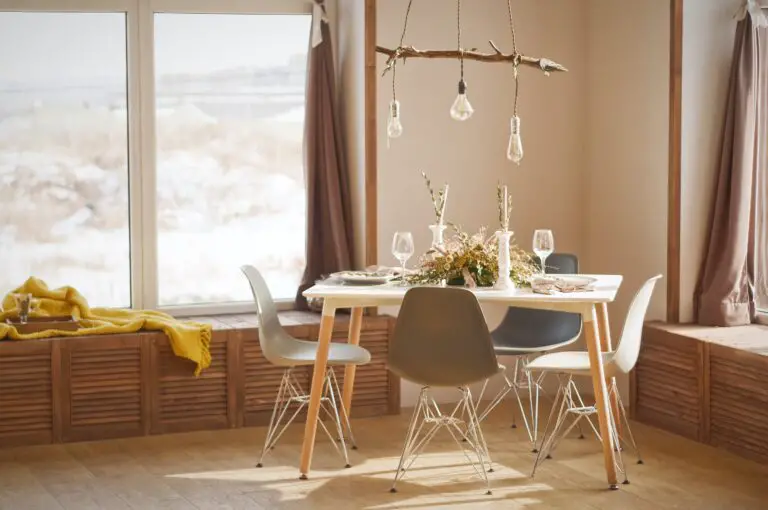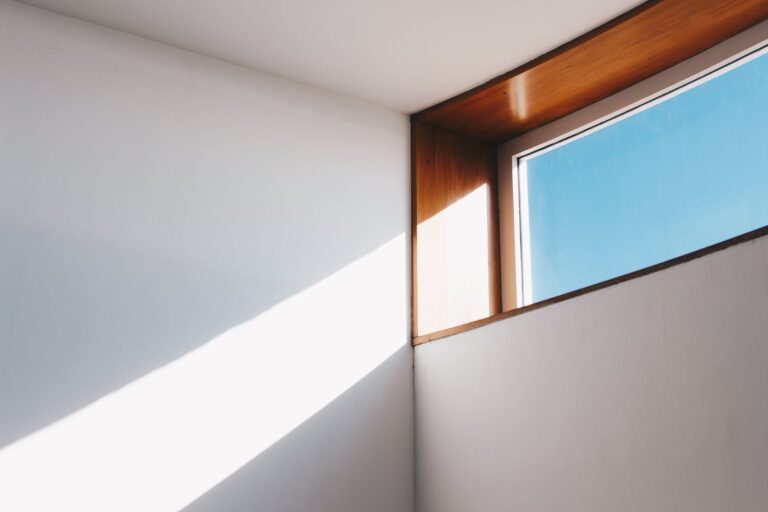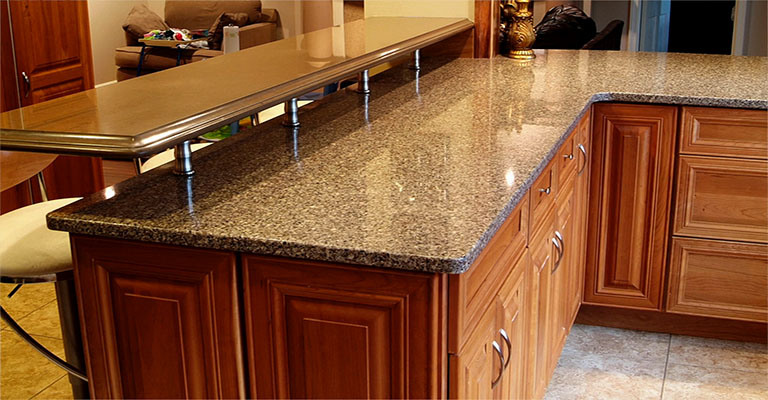Bed in Front of Window: Maximizing Bedroom Space and Style
In the realm of interior design, the placement of furniture is a crucial element that can define the ambiance and functionality of a space. One design choice that often stirs debate is positioning a bed in front of a window. This article explores the benefits, considerations, and creative ideas for placing your bed in front of a window, transforming your bedroom into a harmonious blend of comfort and style.
Aesthetics and Functionality of Bed Placement
The Allure of Natural Light
One of the primary benefits of placing your bed in front of a window is the abundance of natural light. Waking up to the soft morning light can invigorate your mornings, while the changing light patterns add a dynamic visual element to your bedroom.
Space Optimization
In smaller bedrooms or those with awkward layouts, positioning a bed in front of a window can be a smart space-saving strategy. This placement can open up the room, making it feel more spacious and airy.
Room Focal Point
A bed in front of a window can serve as a dramatic focal point. The window frames the bed, creating a picturesque backdrop that can be further enhanced with the right window treatments and bedding.
Considerations for Bed Placement
Privacy Concerns
Privacy is a key consideration when placing a bed in front of a window. Opt for window treatments that provide privacy while still allowing light to filter through. Sheer curtains, blinds, or frosted window films are great options.
Temperature and Comfort
Consider the seasonal variations in temperature. Ensure that your bed isn’t subject to drafts in the winter or excessive heat in the summer. Investing in good quality, thermal-insulating curtains can be a practical solution.
Window Type and Size
The type and size of the window will influence how you position your bed. Larger windows offer more light and a grander view, but may require more thought in terms of privacy and temperature control.
Design Tips for a Bed in Front of a Window
Complementing the Window Style
Choose a bed and bedding that complement the style of your window. A minimalist, low-profile bed works well with modern windows, while a traditional wooden bed frame pairs nicely with classic window designs.
Balancing the Room
Balance the visual weight of the room by placing other furniture pieces thoughtfully. Nightstands, a dresser, or a comfortable chair can counterbalance the bed’s positioning.
Accessorizing
Accentuate your bed with decorative pillows, throws, and a stylish duvet cover. These elements can add color, texture, and personality to your bedroom.
Lighting Options
Incorporate various lighting options like bedside lamps, a ceiling fixture, or string lights to create a cozy and inviting atmosphere, especially important when natural light is insufficient.
Enhancing Bedroom Ambiance
Embracing the View
If you’re fortunate enough to have a scenic view from your window, positioning your bed to face it can turn your bedroom into a tranquil retreat. Imagine waking up to a cityscape, a serene garden, or a peaceful waterfront – it’s like having a living piece of art at your bedside.
Symmetry and Asymmetry
When placing your bed in front of a window, consider the symmetry of the room. A centered bed can create a harmonious look, while an off-centered placement adds a touch of modern asymmetry. Both can work beautifully depending on your personal style and the room’s layout.
Overcoming Challenges with Creative Solutions
Dealing with Headboard Issues
If your bed has a tall headboard, it might obstruct part of the window. One solution is to choose a lower headboard or even a bed without one. Alternatively, consider using a see-through or open-frame headboard that doesn’t block the light or view.
Managing Light Exposure
Too much sunlight can sometimes be an issue, particularly in the early mornings. Blackout curtains or adjustable blinds can provide control over light exposure, ensuring a restful sleep.
Incorporating Plants and Greenery
Adding plants near the window-bed setup can enhance the room’s natural vibe. Plants not only add a decorative touch but also improve air quality, making your bedroom a healthier environment.
Personalizing Your Space
Choosing the Right Color Palette
Select a color scheme that complements both your bedding and the view outside your window. Soft, neutral colors can create a calming effect, while bold hues can make a dramatic statement.
Incorporating Art and Decor
Consider hanging art on the walls or placing decorative items around the room to personalize your space. These elements should complement the bed and window setup, creating a cohesive and inviting bedroom.
Utilizing Under-Bed Storage
If space is a concern, beds with built-in storage or space underneath for baskets and boxes can be a practical solution. This helps keep your bedroom clutter-free and organized.
Making the Most of Your Bedroom’s Natural Light and View
Emphasizing Seasonal Decor
As seasons change, so can the decor of your bedroom. Lightweight, airy fabrics in warmer months and cozy, heavier textures during colder seasons can enhance the mood and functionality of your space. Seasonal changes in bedding, curtains, and decorative elements keep the room feeling fresh and in tune with the natural cycle outside your window.
Incorporating Technology
For those concerned about light and privacy, modern solutions like smart blinds or curtains can offer convenience. These can be programmed to open and close at specific times, ensuring privacy at night and letting in the first light of dawn.
Creating a Healthy and Restful Environment
Sound Considerations
If your window faces a noisy street, soundproofing measures might be necessary. Double-glazed windows or heavy drapes can significantly reduce noise levels, ensuring a more peaceful sleep.
Air Quality and Ventilation
Ensure that your bed placement doesn’t obstruct the window’s functionality. Proper ventilation is crucial for maintaining good air quality and a comfortable temperature in your bedroom.
Expanding the Concept to Different Room Types
Children’s Bedrooms
In a child’s room, placing the bed in front of the window can be magical, especially with whimsical curtains and a view of the stars. Safety is paramount, so ensure that window treatments are child-friendly and that the bed is securely positioned.
Guest Rooms
A bed in front of a window in a guest room can make visitors feel like they’re staying in a luxury retreat. Provide ample bedding options and window coverings to suit different preferences for light and privacy.
Frequently Asked Questions (FAQs)
Q: Is it a good idea to place a bed in front of a window in a small room?
A: Absolutely. In small rooms, placing a bed in front of a window can be an excellent space-saving strategy. It creates a sense of depth and openness, making the room appear larger. However, it’s important to consider the window’s size and the amount of natural light to ensure the space doesn’t feel cramped or overly bright.
Q: What window treatments are best for maintaining privacy while having a bed in front of a window?
A: The best window treatments for maintaining privacy are those that offer flexibility. Consider using layered curtains, where sheer curtains provide privacy during the day while still letting in light, and heavier drapes can be drawn at night. Blinds and shades, especially those with adjustable slats or that can be pulled up from the bottom, also offer excellent control over privacy and light.
Q: How can I deal with temperature variations when placing a bed in front of a window?
A: To deal with temperature variations, invest in good quality, thermal-insulating window treatments. These can help block out heat during summer and retain warmth during winter. Additionally, consider using draft stoppers for windows that may let in cold air and ensure your heating and cooling system is adequately servicing the room.
Q: Are there any specific considerations for the type and size of the bed when placing it in front of a window?
A: Yes, the bed’s size and style are important considerations. A bed that’s too large can overwhelm the space, especially if the window is small. A low-profile bed is often a good choice as it doesn’t obstruct as much of the window. The headboard should also be considered; a solid, high headboard can block light and view, so you might opt for a lower or more open design.
Q: Can placing a bed in front of a window affect sleep quality?
A: It can, particularly if the room gets a lot of light early in the morning or if there’s significant noise from outside. Using blackout curtains or shades can help control light exposure. For noise, consider adding heavier window treatments or double glazing to reduce sound intrusion.
Q: What are some creative ways to enhance the look of a bed placed in front of a window?
A: To enhance the look, consider playing with the height and texture of your bedding and pillows to create a focal point. Adding a throw blanket can also introduce a pop of color or texture. Consider the view from the window as a backdrop and choose bedding that complements the outside scenery. Wall art, indoor plants, and stylish bedside lamps can also add character to the space.
Q: Is there any risk of damage to the bed from sunlight exposure?
A: Prolonged exposure to direct sunlight can potentially fade fabric and damage some materials. To protect your bed, use UV-filtering window treatments, or position the bed so that it’s not in direct sunlight for most of the day. Rotating the bedding and accessories seasonally can also help minimize sun damage.
The Bottom Line
The decision to place a bed in front of a window wall, whether it’s an off-center window or flanked by two windows, requires thoughtful consideration of your bedroom layout. For those with a small bedroom, positioning a bed underneath a large window frame can create an illusion of space, especially when paired with an airy bed frame. Conversely, in rooms with multiple windows, a solid headboard might provide a pleasant contrast without compromising the view.
However, for those adhering to feng shui principles, ensuring your bed is not directly in line with the door, even on a solid wall, is crucial for a harmonious layout. Adding elements like roman shades can offer both privacy and style, enhancing the overall aesthetic. Working with an interior designer can bring professional insight into maximizing the potential of your space, particularly when dealing with unique features like a ground floor bedroom with an entire wall of windows or a bedroom layout with an off-center window.
Thoughtfully chosen furnishings, such as an upholstered headboard or strategically placed bedside tables, can harmonize with the window design, creating a cohesive and inviting atmosphere. Remember, whether you’re contemplating a bed underneath a solitary window or navigating the dynamics of a room with multiple windows, every design choice should reflect your personal style and comfort needs. With the right approach, your bedroom can become a serene retreat that perfectly balances functionality and aesthetic appeal.






